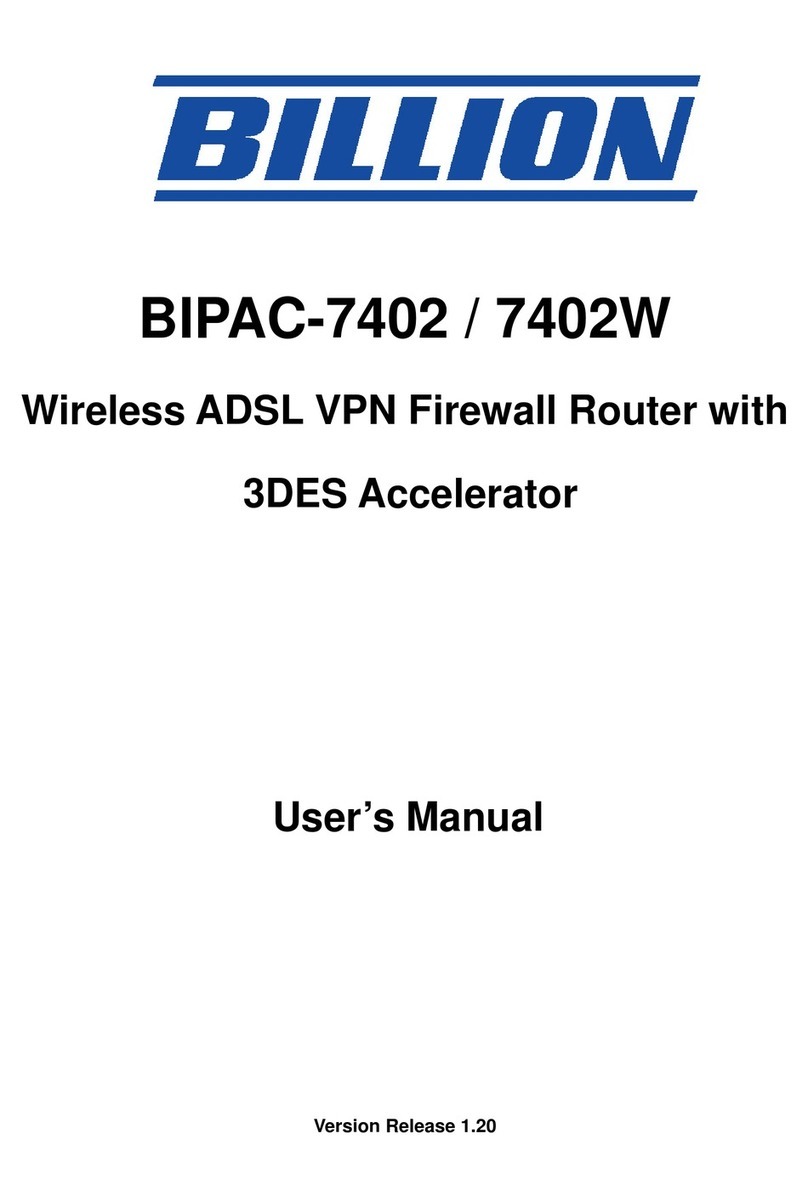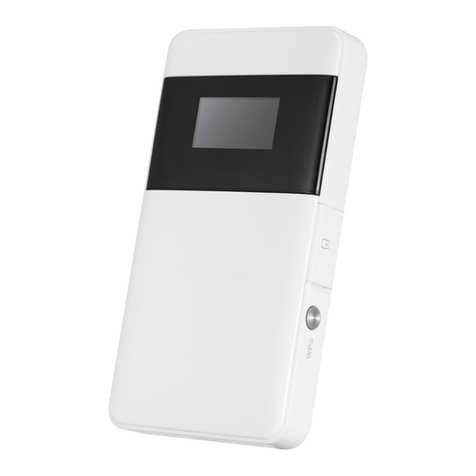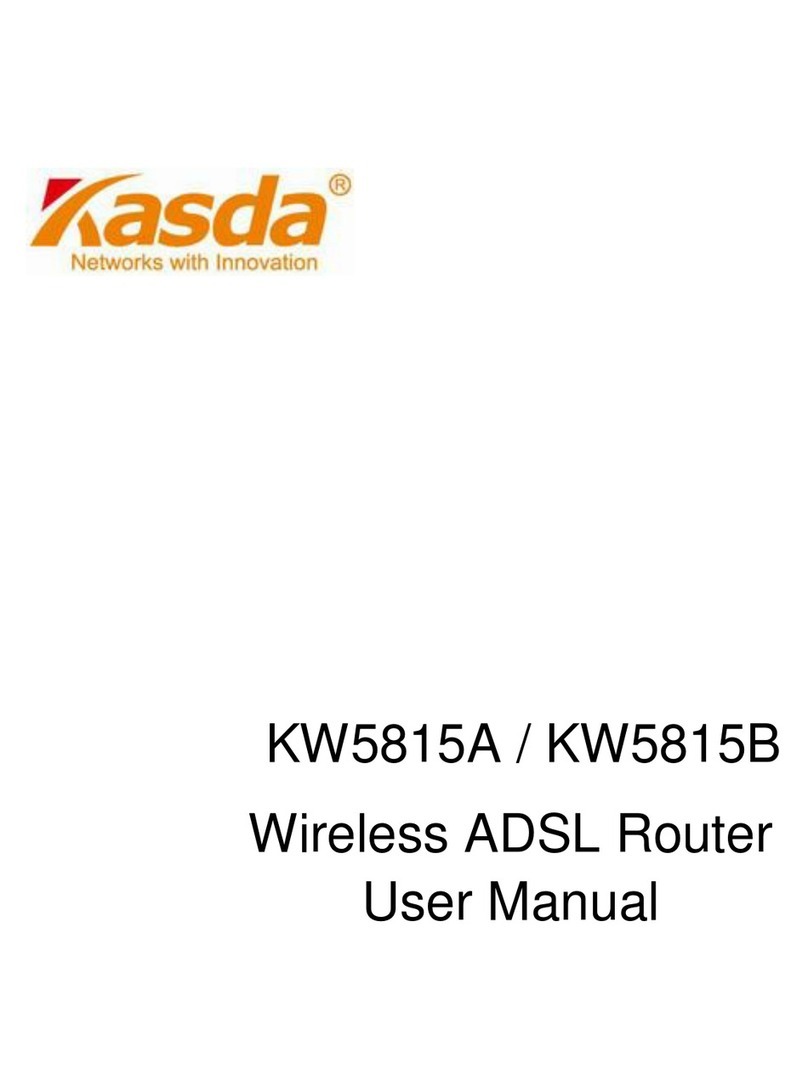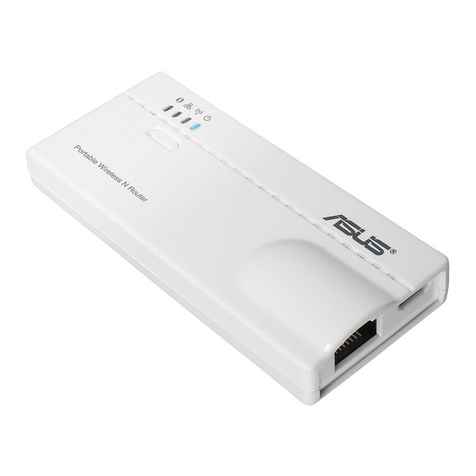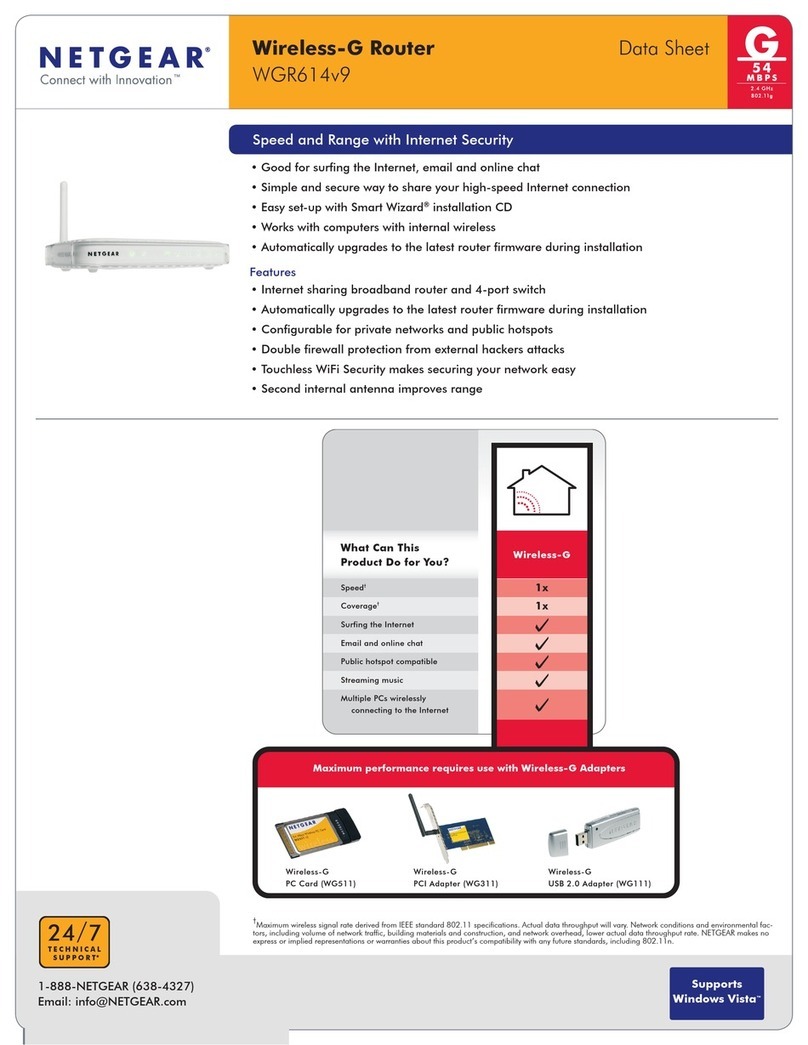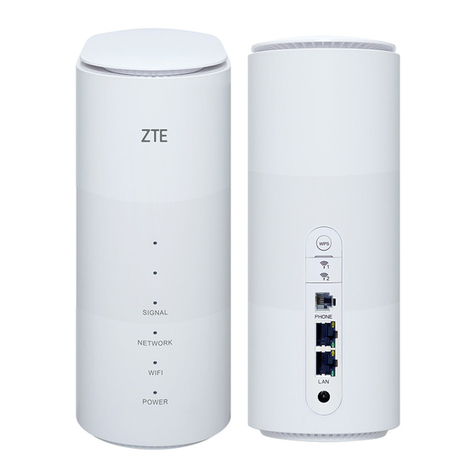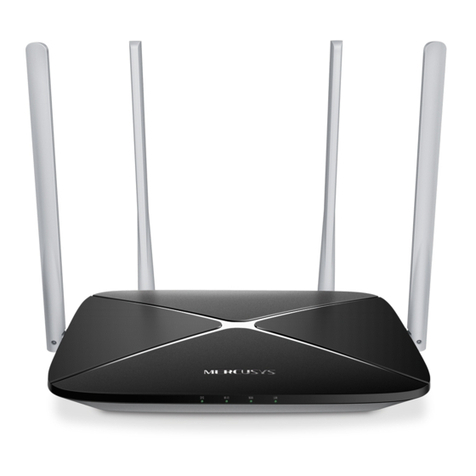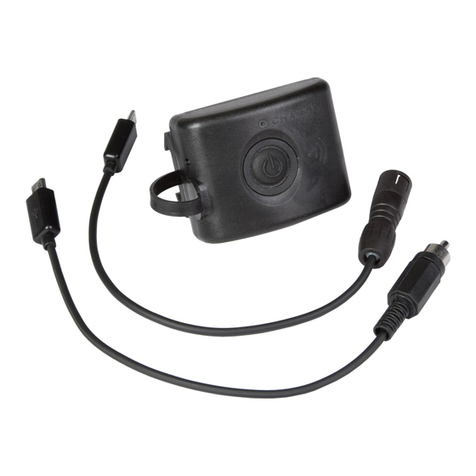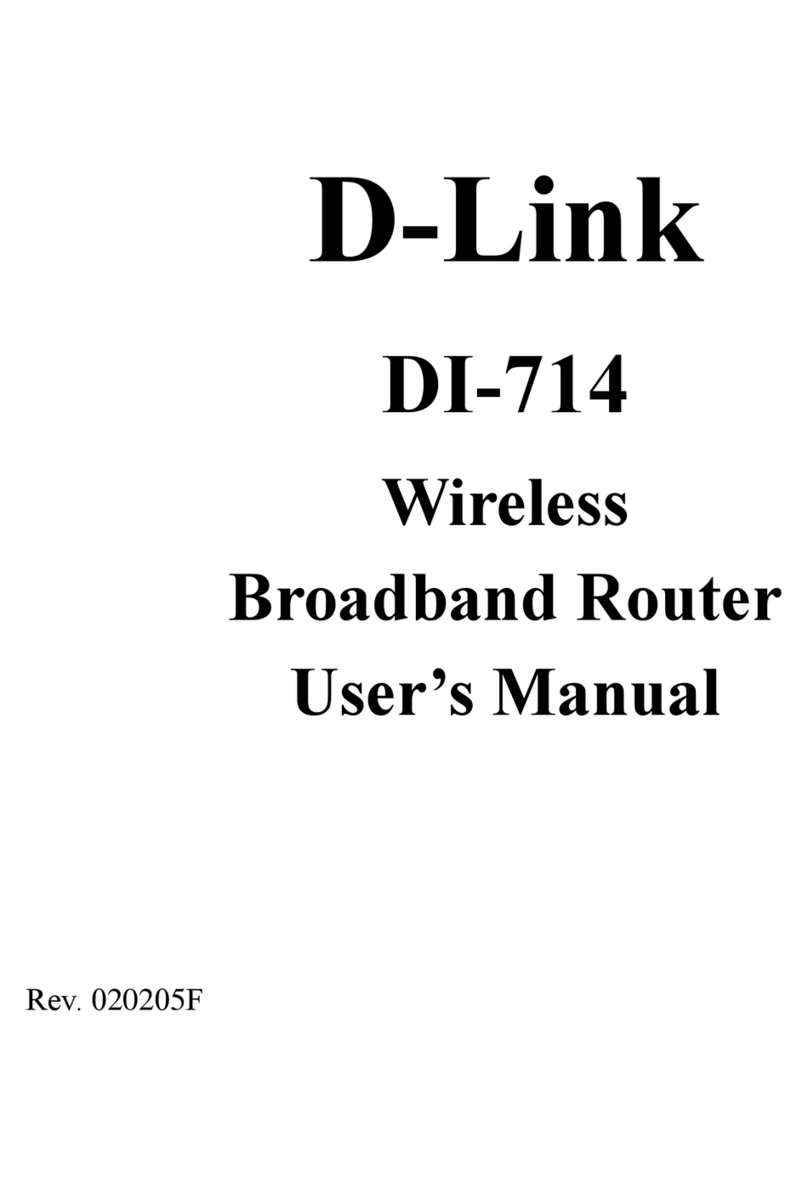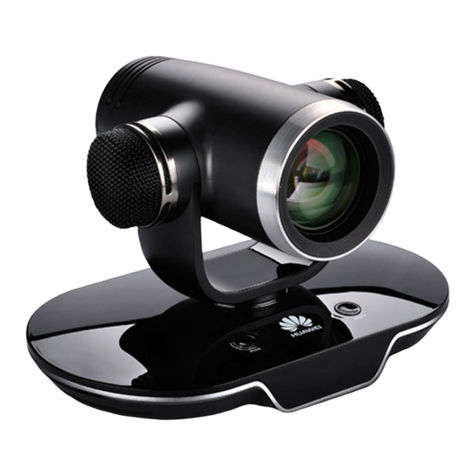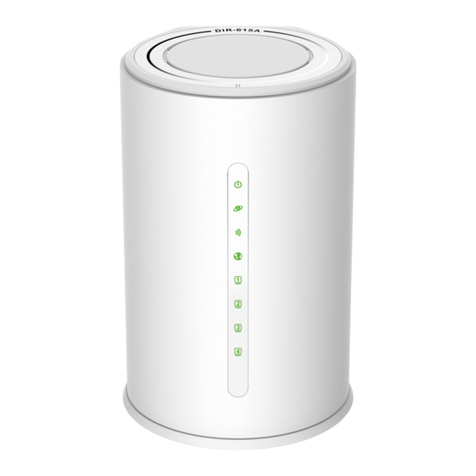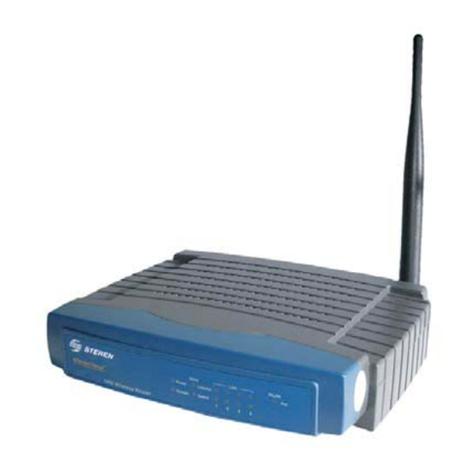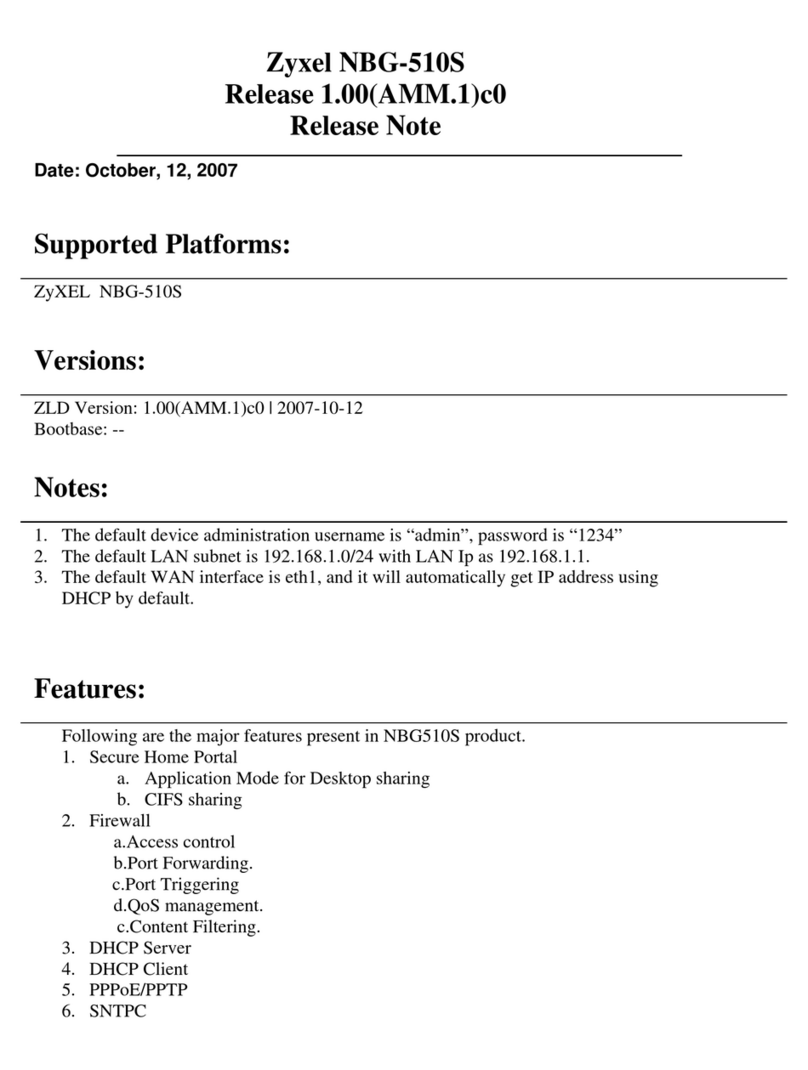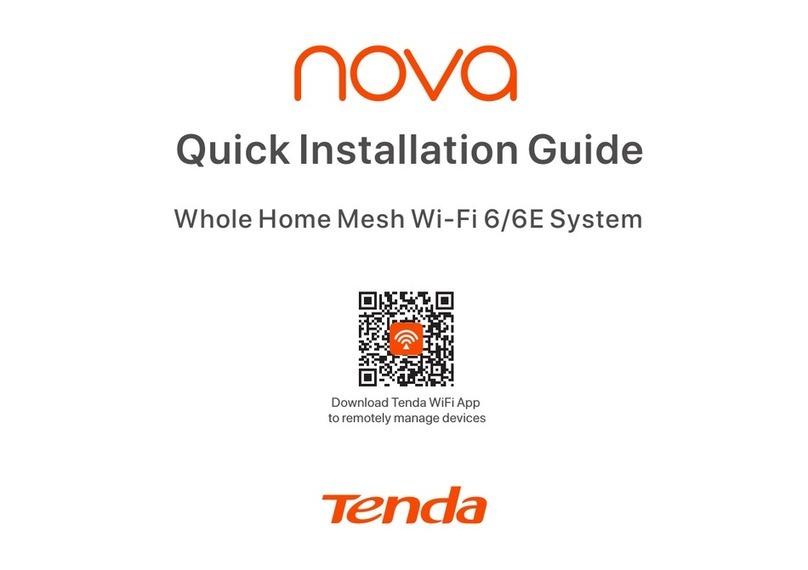insys icom EBW-E100 User manual

EBW-E100
Manual


Copyright © April 15 INSYS MICROELECTRONICS GmbH
Any duplication of this manual is prohibited. All rights on this documentation and
the devices are with INSYS MICROELECTRONICS GmbH Regensburg.
Trademarks
The use of a trademark not shown below is not an indication that it is freely availa-
ble for use.
MNP is a registered trademark of Microcom Inc.
IBM PC, AT, XT are registered trademarks of International Business Machine Cor-
poration.
INSYS®, VCom®, e-Mobility LSG® and e-Mobility PLC® are registered trademarks of
INSYS MICROELECTRONICS GmbH.
Windows™ is a registered trademark of Microsoft Corporation.
Linux is a registered trademark of Linus Torvalds.
Publisher:
INSYS MICROELECTRONICS GmbH
Hermann-Köhl-Str. 22
D-93049 Regensburg, Germany
Phone: +49 941 58692 0
Fax: +49 941 58692 45
Internet: http://www.insys-icom.com
Date: Apr-15
Item: 10014938
Version: 1.5
Language: EN

Content
4
Apr-15
1Preface.....................................................................................................7
1.1 Defects Liability Terms ..........................................................................................7
1.2 Feedback ...............................................................................................................7
1.3 Marking of Warnings and Notes............................................................................8
1.4 Symbols and the Formatting in this Manual ..........................................................9
2Safety.....................................................................................................10
2.1 Intended Use .......................................................................................................10
2.2 Permissible Technical Limits................................................................................11
2.3 Responsibilities of the Operator...........................................................................11
2.4 Qualification of the Personnel..............................................................................11
2.5 Instructions for Transport and Storage ................................................................11
2.6 Markings on the Product .....................................................................................12
2.7 Environmental Protection ....................................................................................12
2.8 Safety Instructions for Electrical Installation ........................................................13
2.9 General Safety Instructions..................................................................................13
3Using Open Source Software.................................................................15
3.1 General Information.............................................................................................15
3.2 Special Liability Regulations ................................................................................16
3.3 Used Open-Source Software ...............................................................................16
4Scope of Delivery...................................................................................17
5Technical Data .......................................................................................18
5.1 Physical features..................................................................................................18
5.2 Technological Features........................................................................................18
6Display and Control Elements ................................................................19
6.1 Meaning of the display elements.........................................................................20
6.2 Function of the Control Elements ........................................................................20
7Connections...........................................................................................21
7.1 Front Panel Connections......................................................................................21
7.2 Terminal Connections on the Top........................................................................22
8Function Overview .................................................................................23
9Assembly ...............................................................................................27
10 Commissioning ......................................................................................31
11 Operating Principle ................................................................................33
11.1 Operating the Web Interface ...............................................................................33
11.2 Access via HTTPS Protocol..................................................................................34

Contents
Apr-15 5
12 Functions ...............................................................................................35
12.1 Basic Settings......................................................................................................35
12.1.1 Configuring Web Interface Access ........................................................ 35
12.1.2 Setting IP Addresses .............................................................................. 36
12.1.3 Entering a Static Route........................................................................... 37
12.1.4 Entering Host Names ............................................................................. 37
12.1.5 Configuring MAC Filter .......................................................................... 38
12.1.6 Configuring Access Protection via Radius Server.................................. 39
12.1.7 Configuring Command Line Interface CLI Access ................................ 40
12.2 LAN (ext)..............................................................................................................41
12.2.1 Configuring the Interface to the External Network (LAN/WAN) ............ 41
12.2.2 Configuring DSL..................................................................................... 42
12.2.3 Configuring Leased Line Operation........................................................ 43
12.2.4 Configuring a Periodical DSL Connection Establishment ...................... 44
12.2.5 Routing................................................................................................... 44
12.2.6 Setting up a Dialling Filter ...................................................................... 46
12.2.7 Creating or Deleting a Firewall Rule....................................................... 47
12.2.8 Creating or Deleting an IP Forwarding Rule........................................... 48
12.2.9 Creating or Deleting a Port Forwarding Rule ......................................... 49
12.2.10 Defining the Exposed Host..................................................................... 50
12.3 VPN .....................................................................................................................51
12.3.1 VPN General ........................................................................................... 51
12.3.2 OpenVPN General .................................................................................. 51
12.3.3 Setting Up an OpenVPN Server ............................................................. 53
12.3.4 Setting Up an OpenVPN Client .............................................................. 56
12.3.5 PPTP General.......................................................................................... 60
12.3.6 Setting Up a PPTP Server....................................................................... 60
12.3.7 Setting Up a PPTP Client........................................................................ 61
12.3.8 Setting Up IPsec..................................................................................... 63
12.3.9 Configuring a GRE Tunnel...................................................................... 67
12.4 Messages ............................................................................................................68
12.4.1 Configuring the Message Dispatch........................................................ 68
12.4.2 Configuring E-Mail Dispatch .................................................................. 69
12.4.3 Configuring SNMP Trap Triggering........................................................ 70
12.5 Server Services....................................................................................................71
12.5.1 Setting up DNS Forwarding ................................................................... 71
12.5.2 Dynamic DNS Update ............................................................................ 72
12.5.3 Setting up the DHCP Server................................................................... 73
12.5.4 Configuring the Router Advertiser ......................................................... 74
12.5.5 Configuring a Proxy Server .................................................................... 75
12.5.6 Configuring an URL Filter....................................................................... 76
12.5.7 Configuring IPT....................................................................................... 76
12.5.8 Configuring the SNMP Agent ................................................................ 78
12.5.9 Configuring MCIP................................................................................... 79
12.6 System Configuration ..........................................................................................80
12.6.1 Displaying the System Log .................................................................... 80
12.6.2 Displaying the Last System Messages................................................... 80
12.6.3 Setting Time and Time Zone .................................................................. 81
12.6.4 Reset ...................................................................................................... 82
12.6.5 Update.................................................................................................... 83
12.6.6 Updating the Firmware .......................................................................... 84
12.6.7 Uploading the Configuration File ........................................................... 85
12.6.8 Download ............................................................................................... 86
12.6.9 Debugging.............................................................................................. 87
12.7 Monitoring...........................................................................................................88

Content
6
Apr-15
13 Maintenance, Repair and Troubleshooting.............................................89
13.1 Maintenance........................................................................................................89
13.2 Troubleshooting...................................................................................................89
13.3 Repair ..................................................................................................................89
14 Waste Disposal ......................................................................................90
14.1 Repurchasing of Legacy Systems........................................................................90
15 Declaration of Conformity ......................................................................91
16 FCC Statement.......................................................................................92
17 Licenses.................................................................................................93
17.1 GNU GENERAL PUBLIC LICENSE .......................................................................93
17.2 GNU LIBRARY GENERAL PUBLIC LICENSE ........................................................96
17.3 Other Licenses...................................................................................................101
18 Glossary ...............................................................................................104
19 Tables and Diagrams............................................................................107
19.1 List of Tables .....................................................................................................107
19.2 List of Diagrams ................................................................................................107
20 Index....................................................................................................108

EBW-E100
Preface
7
1Preface
This manual allows for the safe and efficient use of the product. The manual is part
of the product and must always be stored accessible for installation, commission-
ing and operating personnel.
1.1 Defects Liability Terms
A usage not according to the intended purpose, an ignorance of this documenta-
tion, the use of insufficiently qualified personnel as well as unauthorised modifica-
tions exclude the liability of the manufacturer for damages resulting from this. The
liability of the manufacturer ceases to exist.
The regulations of our Delivery and Purchasing Conditions are effective. These can
be found on our website (www.insys-icom.de/imprint/) under “General Terms and
Conditions“.
1.2 Feedback
We are permanently improving our products and the associated technical docu-
mentation. Your feedback is very helpful for this. Please tell us what you like in par-
ticular on our products and publications and what can be improved from your point
of view. We highly appreciate your suggestions and will include them in our work
to support you and all our customers. We are looking forward to any of your feed-
back.
We'd like to know your applications. Please send us a few headwords that we
know the applications you solve using products of INSYS icom.

Preface
EBW-E100
8
1.3 Marking of Warnings and Notes
Symbols and Key Words
Danger!
Risk of severe or fatal injury
One of these symbols in conjunction with the key word
Danger indicates an imminent danger. It will cause death
or severe injuries if not avoided.
Warning!
Personal injury
This symbol in conjunction with the key word Warning
indicates a possibly hazardous situation. It might cause
death or severe injuries if not avoided.
Caution!
Slight injury and / or material damage
This symbol in conjunction with the key word Caution
indicates a possibly hazardous or harmful situation. It
might cause slight or minor injuries or a damage of the
product or something in its vicinity if not avoided.
Note
Improvement of the application
This symbol in conjunction with the key word Note
indicates hints for the user or very useful information. This
information helps with installation, set-up and operation of
the product to ensure a fault-free operation.

EBW-E100
Preface
9
1.4 Symbols and the Formatting in this Manual
This section describes the definition, formatting and symbols used in this manual.
The various symbols are meant to help you read and find the information relevant
to you. The following text is structured like a typical operating instruction of this
manual.
Bold print: This will tell you what the following steps will result in
After that, there will be a detailed explanation why you could perform the
following steps to be able to reach the objective indicated first. You can
decide whether the section is relevant for you or not.
An arrow will indicate prerequisites which must be fulfilled to be able to
process the subsequent steps in a meaningful way. You will also learn
which software or which equipment you will need.
1. One individual action step: This tells you what you need to do at this
point. The steps are numbered for better orientation.
A result which you will receive after performing a step will be marked
with a check mark. At this point, you can check if the previous steps
were successful.
Additional information which you should consider are marked with a
circled "i". At this point, we will indicate possible error sources and tell
you how to avoid them.
Alternative results and steps are marked with an arrow. This will tell
you how to reach the same results performing different steps, or what
you could do if you didn't reach the expected results at this point.

Safety
EBW-E100
10
2Safety
The Safety section provides an overview about the safety instructions, which must
be observed for the operation of the product.
The product is constructed according to the currently valid state-of-the-art technol-
ogy and reliable in operation. It has been checked and left the factory in flawless
condition concerning safety. In order to maintain this condition during the service
life, the instructions of the valid publications and certificates must be observed and
followed.
It is necessary to adhere to the general safety instructions must when operating the
product. The descriptions of processes and operation procedures are provided with
precise safety instructions in the respective sections in addition to the general
safety instructions.
Moreover, the local accident prevention regulations and general safety regulations
for the operating conditions of the device are effective.
An optimum protection of the personnel and the environment from hazards as well
as a safe and fault-free operation of the product is only possible if all safety instruc-
tions are observed.
2.1 Intended Use
The product may only be used for the purposes specified in the function overview.
In addition, it may be used for the following purposes:
Usage and mounting in an industrial cabinet.
Switching and data transmission functions in machines according to
the machine directive 2006/42/EC.
Usage as data transmission device for a PLC.
The product may not be used for the following purposes and used or operated un-
der the following conditions:
Controlling or switching of machines and systems, which do not
comply with the directive 2006/42/EC.
Usage, controlling, switching and data transmission of machines and
systems, which are operated in explosive atmospheres.
Controlling, switching and data transmission of machines, which may
involve risks to life and limb due to their functions or when a
breakdown occurs.

EBW-E100
Safety
11
2.2 Permissible Technical Limits
The product is only intended for the use within the permissible technical limits
specified in the data sheets.
The following permissible limits must be observed:
The ambient temperature limits must not be fallen below or
exceeded.
The supply voltage range must not be fallen below or exceeded.
The maximum humidity must not be exceeded and condensate
formation must be prevented.
The maximum switching voltage and the maximum switching current
load must not be exceeded.
The maximum input voltage and the maximum input current must not
be exceeded.
2.3 Responsibilities of the Operator
As a matter of principle, the operator must observe the legal regulations, which are
valid in his country, concerning operation, functional test, repair and maintenance
of electrical devices.
2.4 Qualification of the Personnel
The installation, commissioning and maintenance of the product must only be per-
formed by trained expert personnel, which has been authorised by the plant opera-
tor. The expert personnel must have read and understood this documentation and
observe the instructions.
Electrical connection and commissioning must only be performed by a person, who
is able to work on electrical installations and identify and avoid possible hazards in-
dependently, based on professional training, knowledge and experience as well as
knowledge of the relevant standards and regulations.
2.5 Instructions for Transport and Storage
The following instructions must be observed:
Do not expose the product to moisture and other potential hazardous
environmental conditions (radiation, gases, etc.) during transport and
storage. Pack product accordingly.
Pack product sufficiently to protect it against shocks during transport
and storage, e.g. using air-cushioned packing material.
Check product for possible damages, which might have been caused by improper
transport, before installation. Transport damages must be noted down to the ship-
ping documents. All claims or damages must be filed immediately and before in-
stallation against the carrier or party responsible for the storage.

Safety
EBW-E100
12
2.6 Markings on the Product
The identification plate of the product is either a print or a label on a face of the
product. Amongst other things, it can contain the following markings, which are
explained in detail here.
Observe manual
This symbol indicates that the manual of the product
contains essential safety instructions that must be followed
implicitly.
Dispose waste electronic equipment
environmentally compatible
This symbol indicates that waste electronic equipment
must be disposed separately from residual waste via
appropriate collecting points. See also Section Disposal in
this manual.
CE marking
By applying a CE marking, the manufacturer confirms that
the product complies with the European directives that
apply product-specific.
Appliance Class II - double insulated
This symbol indicates that the product complies with
Appliance Class II
2.7 Environmental Protection
Dispose the product and the packaging according to the relevant environmental
protection regulations. The Waste Disposal section in this manual contains notes
about disposing the product. Separate the packaging components of cardboard
and paper as well as plastic and deliver them to the respective collection systems
for recycling.

EBW-E100
Safety
13
2.8 Safety Instructions for Electrical Installation
The electrical connection must only be made by authorised expert personnel ac-
cording to the wiring diagrams.
The notes to the electrical connection in the manual must be observed. Otherwise,
the protection category might be affected.
The safe disconnection of circuits, which are hazardous when touched, is only en-
sured if the connected devices meet the requirements of VDE T.101 (Basic require-
ments for safe disconnection).
The supply lines are to be routed apart from circuits, which are hazardous when
touched, or isolated additionally for a safe disconnection.
An easily accessible isolation device that disconnects all lines must be installed
prior to commissioning of the device to be able to isolate it completely from power
supply.
2.9 General Safety Instructions
Caution!
Moisture and liquids from the environment may seep into
the interior of the product!
Fire hazard and damage of the product.
The product must not be used in wet or damp
environments, or in the direct vicinity of water. Install the
product at a dry location, protected from water spray.
Disconnect the power supply before you perform any work
on a device which may have been in contact with
moisture.
Caution!
Short circuits and damage due to improper repairs and
modifications as well as opening of maintenance areas.
Fire hazard and damage of the product.
It is not permitted to open the product for repair or
modification.
Caution!
Overcurrent of the device supply!
Fire hazard and damage of the product due to overcurrent.
The product must be secured with a suitable fuse against
currents exceeding 1.6 A.

Safety
EBW-E100
14
Caution!
Overvoltage and voltage peaks from the mains supply!
Fire hazard and damage of the product due to overvoltage.
Install suitable overvoltage protection.
Caution!
Damage due to chemicals!
Ketones and chlorinated hydrocarbons dissolve the plastic
housing and damage the surface of the device.
Never let the device come into contact with ketones (e.g.
acetone) or chlorinated hydrocarbons, such as
dichloromethane.

EBW-E100
Using Open Source Software
15
3Using Open Source Software
3.1 General Information
Our product EBW-E100 contains, amongst others, so-called open-source software
that is provided by third parties and has been published for free public use. The
open-source software is subject to special open-source software licenses and the
copyright of third parties. Basically, each customer can use the open-source soft-
ware freely in compliance with the licensing terms of the respective producers. The
rights of the customer to use the open-source software beyond the purpose of our
product are regulated in detail by the respective concerned open-source software
licenses. The customer use the open-source software freely, as provided in the re-
spective effective license, beyond the purpose that the open-source software gets
in our product. In case there is a contradiction between the licensing terms for our
product and the respective open-source software license, the respective relevant
open-source software license takes priority over our licensing terms, as far as the
respective open-source software is concerned by this.
The use of the used open-source software is possible free of charge. We do not de-
mand usage fees or any comparable fees for the use of the open-source software
contained in our product. The use of the open-source software in our product by
the customer is not part of the earnings we achieve with the contractual compen-
sation.
All open-source software programs contained in our product can be taken from the
available list. The most important open-source software licenses are listed in the Li-
censes section at the end of this publication.
As far as programs contained in our product are subject to the GNU General Public
License (GPL), GNU Lesser General Public License (LGPL), Clarified Artistic License
or another open-source software license, which regulates that the source code
must be made available, and if this software is not already delivered in source code
on a data carrier with our product, we will send you this at any time upon request.
If it is required to send this on a data carrier, the sending will be made against pay-
ment of a cost compensation of € 10,00. Our offer to send the source code upon
request ceases automatically 3 years after delivery of our product to the customer.
Requests must be directed to the following address, if possible under specification
of the serial number:
INSYS MICROELECTRONICS GmbH
Hermann-Köhl-Str. 22
93049 Regensburg, Germany
Phone +49 941 58692 0
Fax +49 941 58692 45

Using Open Source Software
EBW-E100
16
3.2 Special Liability Regulations
We do not assume any warranty or liability, if the open-source software programs
contained in our product are used by the customer in a manner that does not com-
ply any more with the purpose of the contract, which is the basis of the acquisition
of our product. This concerns in particular any use of the open-source software
programs outside of our product. The warranty and liability regulations that are pro-
vided by the respective effective open-source software license for the respective
open-source software as listed in the following are effective for the use of the
open-source software beyond the purpose of the contract. In particular, we are not
liable, if the open-source software in our product or the complete software configu-
ration in our product is changed. The warranty granted with the contract, which is
the basis of the acquisition of our product, is only effective for the unchanged
open-source software and the unchanged software configuration in our product.
3.3 Used Open-Source Software
open-source software used in this product.

EBW-E100
Scope of Delivery
17
4Scope of Delivery
The scope of delivery includes all accessories listed below. Please check if all
accessories are included in the box. If a part is missing or damaged, please contact
your distributor.
1 EBW-E100
1 Quick Installation Guide
The scope of delivery does not include optional accessories. The following parts are
available from your distributor or INSYS icom:
DIN rail power supplies
The following related documents can be found in the download area and on the
product page of the EBW-E100 under www.insys-icom.com:
Add-On Manual ASCII Configuration File
Add-On Manual Automatic Update
Add-On Manual CLI
Add-On Manual Monitoring App

Technical Data
EBW-E100
18
5Technical Data
5.1 Physical features
All specified data was measured with nominal input voltage, at full load, and an
ambient temperature of 25 ℃. The limit value tolerances are subject to the usual var-
iations.
Physical Feature
Value
Operating voltage
10 ... 48 V DC (±20%)
Power consumption idle
approx. 2 W
Power consumption connection
max. 3 W
Weight
130 g
Dimensions (Width x Depth x Height)
45 mm x 110 mm x 75 mm
Temperature range
-30 °C … 70 °C (max. 85 °C, s. below)
Maximum permissible humidity
95% non-condensing
IP rating
Housing IP40, Terminals IP20
Table 1: Physical Features
Max. specification applies to occasional data transmission and use of
no more than 2 LAN ports. Functional limitations (in particular for data
transmission) may occur with this.
5.2 Technological Features
Technological Feature
Description
Ethernet interface
10/100 Mbit/s full/half duplex auto sense;
automatic detection of "crossover" or "patch"
wiring.
LAN ext interface
10/100 Mbit/s full/half duplex auto sense;
automatic detection of "crossover" or "patch"
wiring.
Table 2: Technological Features

EBW-E100
Display and Control Elements
19
6Display and Control Elements
Figure 1: Display and control elements on the front of the device
Position
Description
1
Reset key
2
Power LED
3
COM LED
4
Signal LED
5
Status LED
6
Activity LED for LAN ext.
7
Link LED for LAN ext.
8
Activity LED for LAN
9
Link LED for LAN
Table 3: Description of the display and control elements on the front panel of the device

Display and Control Elements
EBW-E100
20
6.1 Meaning of the display elements
LED
Colour
Function
off
flashing
blinking
on
Link
LAN
green
10/100
MBit/s
10 MBit/s
100 MBit/s
Activity
LAN
orange
Activity
not con-
nected
Data
traffic
connected
Power
green
Supply
missing
present
COM
green
PPP link
offline
establishing
orange
PPP link
established
Signal
green
PPP
data
traffic
Status
green
VPN
VPN connec-
tion estab-
lished
red
Status
Initialization,
FW update,
fault
Table 4: Meaning of display elements
6.2 Function of the Control Elements
Description
Operation
Meaning
Reset key
Press once for a short
time.
Resets the software and
restarts it.
(Soft reset)
Press at least 3 seconds.
Resets the hardware and
restarts it.
(Hard reset)
Press three times for a
short time within 2
seconds.
Deletes all settings and
resets the device to the
factory defaults.
Table 5: Description of the functions and meaning of the control elements
Table of contents
